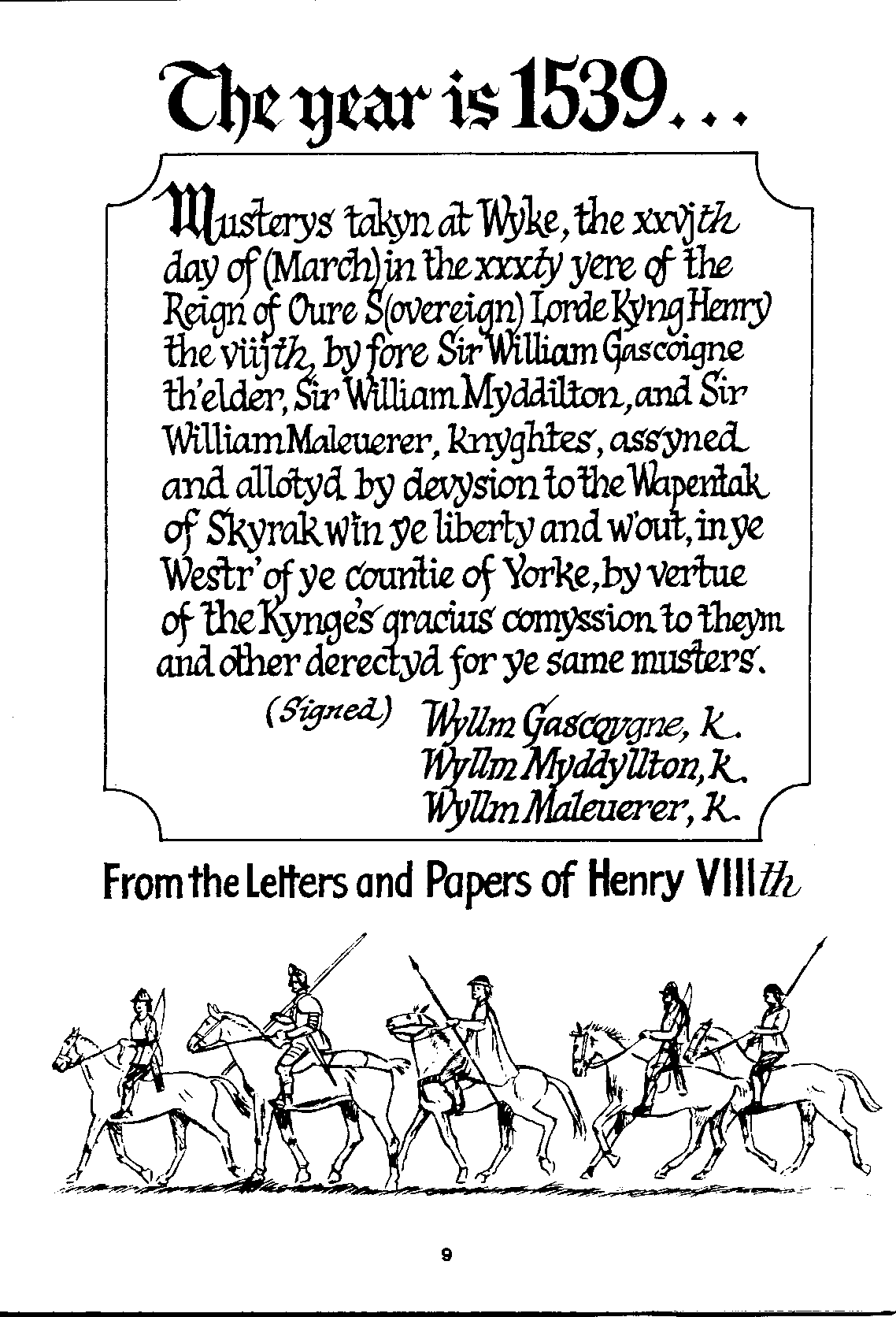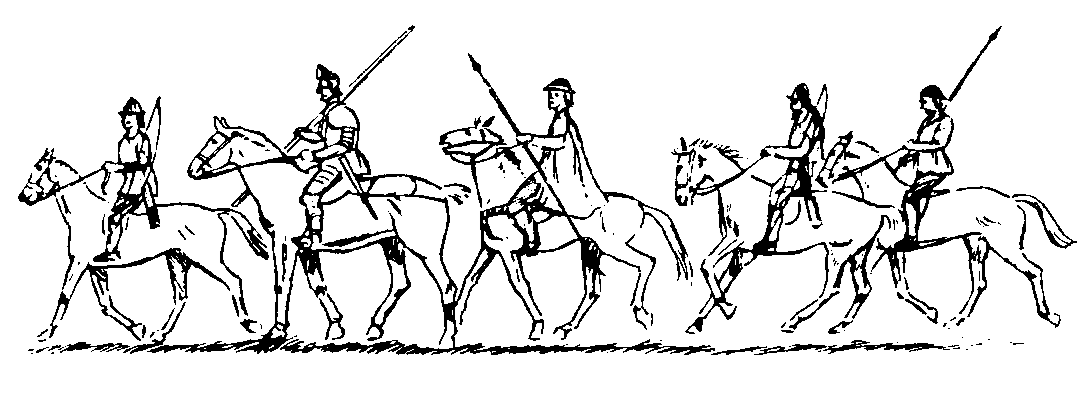Musters in the Skyrack Wapentake
Barwicker No.9 March 1988
Drawings and other artwork by Bart Hammond


| "The King being informed that the Pope by instigation of Cardinall Pole had mooved and stirred divers great princes and potentats of Christendome to invade the realme of England, without all delaie rode himselfe toward the sea coasts, and sent diverse of his nobles and councellors to surveie all the ports and places of danger on the coast, where any meet and convenient landing place might be doubted, as well as the borders of England, as also of Wales: in which dangerous places he caused bulworks and forts to be erected. And further, he caused the Lord Admerall, Eerle of Southampton, to prepare in readiness his navie of ships for defense of the coasts. Beside this, he sent forth commissions to have generall musters, taken through the realme, to understand what number of able men he might make account of: and further to have the armor and weapons seene and viewed. |

|
William Bryge, Constable, abill in person, archer, haveng no harnez. John Gascoigne, esquyer, horssed and harnessed for hymselff and two seruauntes, bowmen, and hymselff abill. Willaim Ellez, esquyer, horssed and harnessed for hymselff and oone seruaunt, hymselff a archer, and his seruaunt abill. Archerz, abill personez horssed and harnessed: John Evers John Branche, abill man W'lliam Crofte John Hacon Myles Pyckerd Thomas Jakson John Stettill Billes, abill personez horssed and harnessed: John Hopton, horssed and harnessed Robert Rawson, yonger Robert Rawson, th'elder James Hardecastell Cuthbert Symkyn Thomas Yeston Archers, abill personez havyng noo harnesse: Thomas Potter W'illiam Rasyn Thomas W'right John Kytton Antony Shaw John Gybson Thomas Talor William Snawdon Thomas Wylson Billmen, abyll personez parcel1 harnessed,part horssed; Persiuell Kygley, a horse Antony Hypron, a horse William Raper, a horse, a jak Thomas Tate, a jak Robert Grenewode, a jak & salet Percyvell Bakhous, a jak & salet Robert Cook, jak and salet Richerd Dogson, a salett John Weste, a horsse Billmen, abill personez, havyng no harnez: John Baley William Garford Christopher Brame Robert Yngyll John Londe Richerd Roodes John Herreson Richerd Flater William Tomson Robert Blande William Erle Richerd Saner Robert Rycherdson John Talor |
